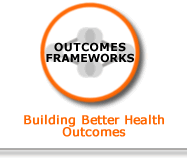 |
|
Links 2.2 and 2.3 Actions:
|
|
Rationale The theory for designing, developing and communicating appropriate evidence-informed messages for the population (tailored for different groups), relevant workforce, and expectant parents, is that it will improve understanding and awareness of a range of topics (e.g. value of parenting, CYP development and attachment, preparation for parenthood) and contribute to individuals becoming enabled and motivated to seek support. This, in turn, could lead to engagement with services and individuals being better prepared to support the holistic development of CYP. A key element of this action is also ensuring the relevant workforce are provided with evidence-informed training and development to enable them to support parents and families – see model 3 for further discussion of workforce development. Further evidence is needed to support this pathway. It is important to acknowledge that characteristics of interventions that are less likely to be effective in reducing health inequalities include information-based campaigns (mass-media information campaigns), written materials (pamphlets, food labelling), campaigns reliant on people taking the initiative to opt in, and campaigns/messages designed for the whole population. [1] It is essential that to minimise the risk of increasing health inequalities that the provision of information is evidence-informed and tailored to the needs of different groups. References:
|
|

